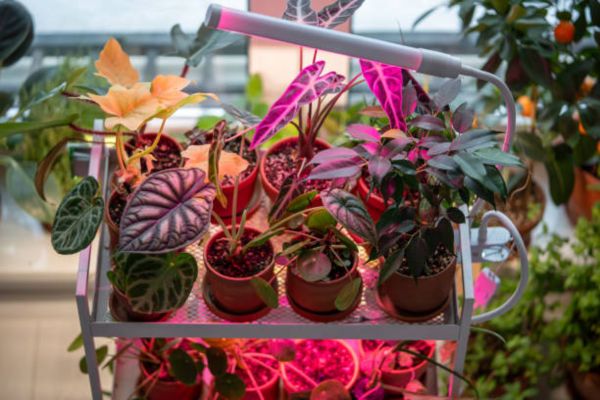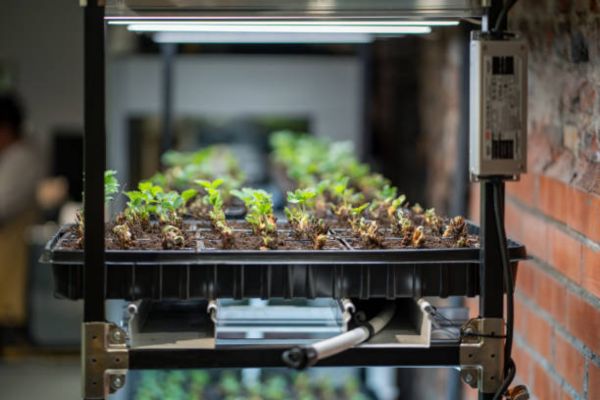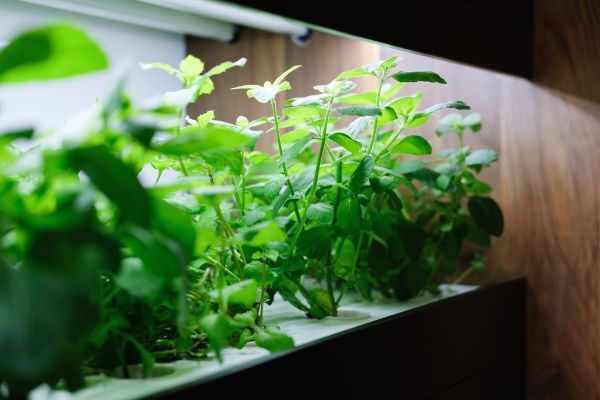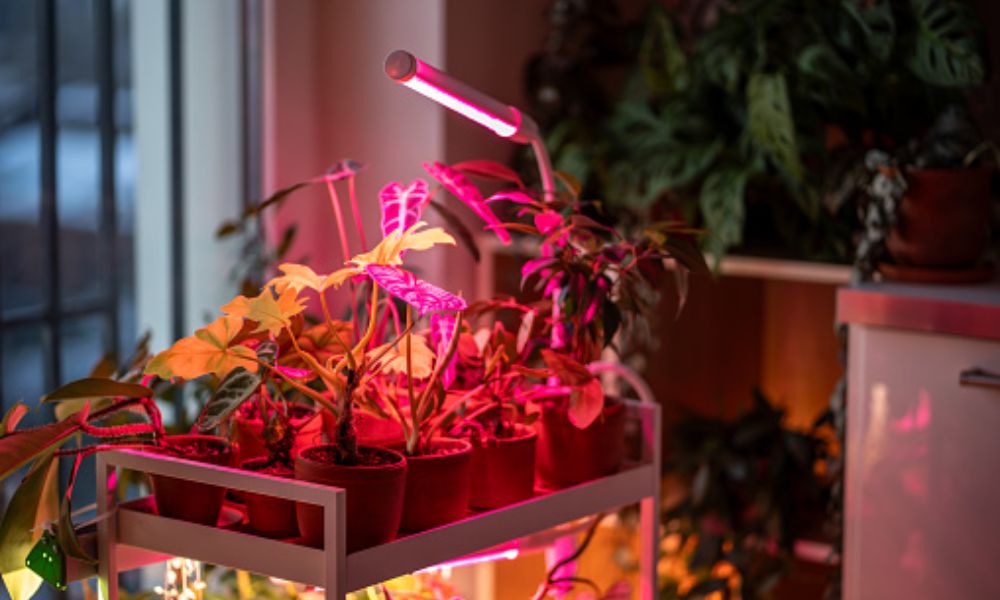When I bought my first grow light, I had no clue how many lumens a grow light should be—I just wanted my herbs to stop wilting on the windowsill. Turns out, brightness matters more than I thought. After lots of trial and error (and a few crispy basil plants), I finally understood the difference between just “light” and the right light. If you’re wondering what lumens for grow lights work best or how many lumens your plants need to thrive, you’re in the right place. I’ll break it all down in simple terms—based on real mistakes, real fixes, and real results.
What Are Lumens and Why Do They Matter for Grow Lights?
Lumens mean how bright a light is. They don’t measure heat. They don’t measure color. Just brightness—like how sunny a room feels. That’s what your plants “see” indoors.
When I first bought a grow light, I had no clue what to look for. My herbs stayed thin. They leaned toward the window. I thought they needed water—but really, they needed more light. That’s when I learned what lumens for grow lights really meant.
Lumens matter because plants need enough light to grow strong. If the light is too weak, they stretch. They fade. They stop growing. But when I gave my plants the right lumen level, everything changed. They grew faster. They looked green and full.
Some people ask about PAR or PPFD. These are big words used for pro setups. They measure plant-ready light. But for most of us at home, lumens are easier to use and great for picking grow bulbs.
Fast fact: Lumens are good for home growers. PAR and PPFD are better for high-tech plant labs.
Now, I always check the label. If I see 2,000–3,000 lumens, I know that’s good for herbs. If I want to grow fruit like tomatoes, I look for 5,000 or more.
Tip: If your plants look weak or pale, try a brighter bulb. Lumens may be the fix.
Getting the right brightness is like giving your plant the sun indoors. It’s not hard once you know what to look for—and your plants will thank you for it.
How Many Lumens Do Plants Really Need?

Plants need different amounts of light to grow well. Some like shade. Others love full sun. So the number of lumens your grow light gives should match the plant you’re growing.
Here’s a simple guide I follow:
- Low-light plants like herbs, lettuce, or spinach do fine with 2,000 to 3,000 lumens per square foot.
- Medium-light plants such as peppers or strawberries grow better with 3,000 to 5,000 lumens/sq ft.
- High-light plants—like tomatoes or cannabis—need strong light. Aim for 5,000 to 10,000 lumens/sq ft.
When I first started, I tried to grow basil and cherry tomatoes under the same bulb. The basil thrived. The tomatoes didn’t. They stretched out, looked weak, and barely grew. That’s when I realized—how many lumens plants need depends on the plant.
I upgraded to a 5,000-lumen grow bulb for indoor plants just for the tomatoes. Within two weeks, they perked up. New leaves showed. Buds formed. It felt like a win.
I also learned that distance matters. I kept the light closer for small herbs. But I had to raise it for taller plants to spread the light better. It took some trial and error—but it was worth it.
What Type of Grow Lights Produce the Right Lumens?
Not all grow lights are the same. Some shine bright with less power. Others use more energy but give off weaker light. If you want to pick the best grow bulb, you need to check both watts and lumens.
Here’s a quick look at three common grow lights:
| Type | Pros | Cons | Lumen Output |
| LED | Bright, cool, long life, low energy use | Can cost more upfront | ~80–100 lumens/watt |
| CFL | Cheap, easy to find, okay for herbs | Lower brightness, short life | ~50–70 lumens/watt |
| HID | Very bright, great for big plants | Runs hot, uses more power | ~100–150 lumens/watt |
When I first started, I picked a 40W LED thinking it was weak. But it gave me over 4,000 lumens—more than enough for my leafy greens. Later, I tried a 60W CFL. It used more power, but the light looked dim. That’s when I learned:
LEDs are my go-to now. They stay cool, last long, and give bright light with low energy use. I even use a few small LEDs for herbs on my kitchen shelf. For bigger plants like tomatoes, I add a stronger LED panel with higher lumens.
How Many Lumens Do You Need for a Small Indoor Setup?

If you’re growing plants in a small space—like a shelf, windowsill, or grow tent—you don’t need huge lights. But you still need the right amount of lumens to keep your plants happy.
When I started my first indoor setup, I used a sunny window and a basic bulb. It worked for herbs, but my peppers struggled. That’s when I learned how much lumens matter, even in small spaces.
Here’s a simple guide I follow:
- Windowsill setup: Go for 2,000–3,000 lumens if you’re growing herbs or leafy greens.
- Small grow tent (2×2 ft): Aim for 7,000–8,000 lumens if you’re growing fruiting plants like peppers or tomatoes.
- Shelf garden: Around 3,000–5,000 lumens works well for mixed greens and veggies.
At first, I used one light. But my plants leaned to one side. So I added a second bulb and raised the lights a bit. That made the light more even, and the plants perked up fast.
Pro tip: Adjust the light height based on plant size. Keep it closer for small herbs. Raise it as plants grow taller to spread the light.
You don’t need a fancy setup. Just match your grow space size with the right lumen output, and keep your light at a good distance. That’s the key to making a small space feel like full sun.
Are Grow Lights Bad for Humans? Let’s Clear the Air
This is one of the most common questions I get:
“Are grow lights bad for humans?” And honestly—it’s a fair thing to ask. I had the same worry when I set up my first grow corner near my desk.
Most LED grow lights give off a mix of blue and red light. The blue part is strong—great for plant growth, but not always great for your eyes. I noticed it myself after long hours in the same room. My eyes felt tired, and I had a harder time falling asleep some nights.
So, I made a few simple changes:
- I moved my grow lights away from direct eye level
- I set them on a timer to turn off in the evening
- I added a reflector shield so the light aimed down—not at me
Tip: If you’re using grow lights in a shared space, always angle them away from where you sit or sleep.
Now my plants still get what they need—and I get better rest. It’s all about balance. Like anything in life, too much of a good thing can cause problems. But used wisely, grow lights are safe for people, pets, and plants.
Pro Tips from My Experience – Getting the Most from Your Grow Light

After a few wins (and many fails), I’ve learned some small tricks that make a big difference. If you want to get the most out of your grow bulbs for indoor plants, these are the things I wish I knew earlier.
1. Use a lux meter or phone app.
You don’t have to guess. I used a free lux app to check brightness across my grow shelf. Some spots were way dimmer than I thought. A quick check helped me move the light for even coverage.
2. Watch the light distance.
I kept my first grow light way too close. The leaves curled and dried up. Later, I raised it a few inches—and my plants loved it.
3. Clean your bulbs often.
Dust builds up fast. It cuts brightness—even if the light is on. I now wipe my bulbs with a dry cloth once a week.
4. Don’t overdo it.
More light doesn’t always mean more growth. I once added an extra bulb thinking it would help. My plants turned pale and looked stressed. Less was more.
Learning these small things helped me turn a cluttered grow shelf into a mini jungle. It’s not just about having light—it’s about using it right.
FAQs
Can I use regular LED bulbs for growing plants?
Some high-lumen LED bulbs work for low-light plants, but full-spectrum grow bulbs are much better for strong, healthy growth.
How do I know if my grow light is bright enough?
Look at the lumen output and watch your plants. If they look pale, weak, or grow tall and thin, the light is likely too low.
Are 1000 lumens enough for indoor plants?
For small, low-light plants, 1000 lumens can work. But fruiting plants need more—up to 10x that amount.
Do more lumens always mean better growth?
Not always. Too much light can stress your plants. It’s about giving the right amount, not the most.
Final Thoughts
At the end of the day, it all comes down to this: the right amount of lumens = healthy, happy plants. Whether you’re growing basil on a windowsill or tomatoes in a tent, matching light to your plant’s needs makes all the difference.
Don’t stress—my first grow light setup was far from perfect. I made mistakes, burned a few leaves, and had to try different bulbs. But each small win taught me something. And trust me, you’ll figure it out too.

